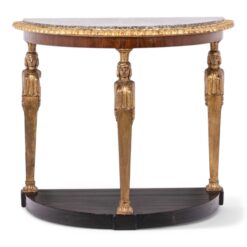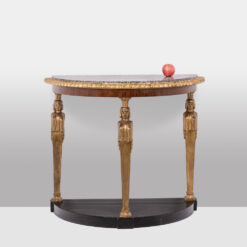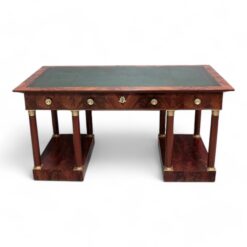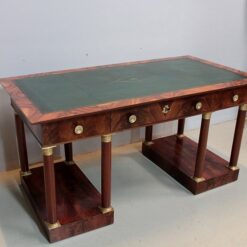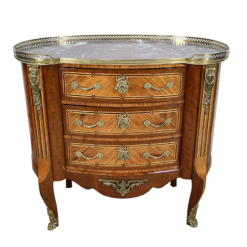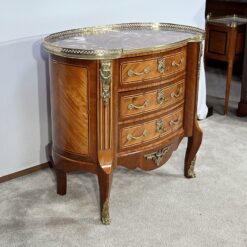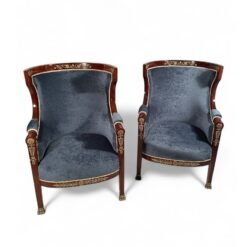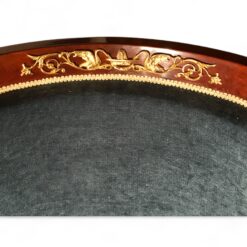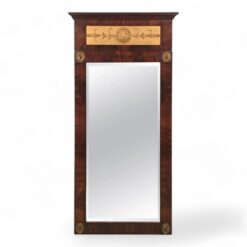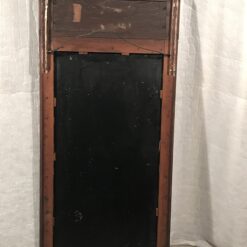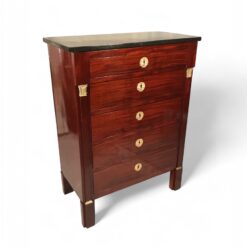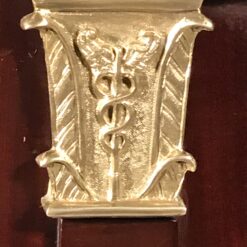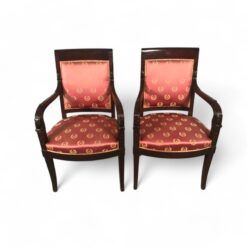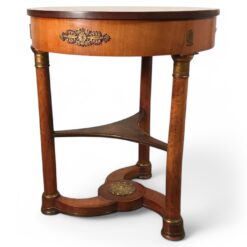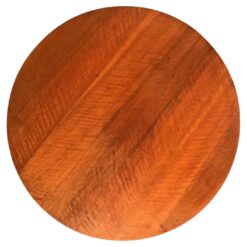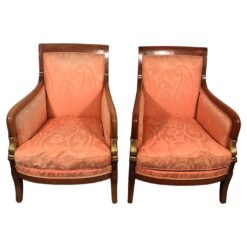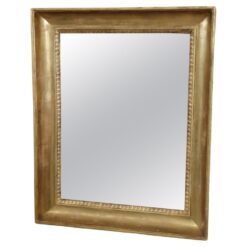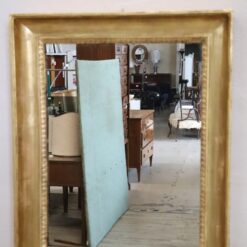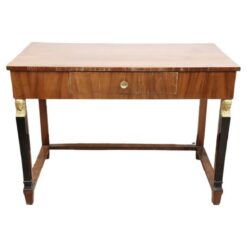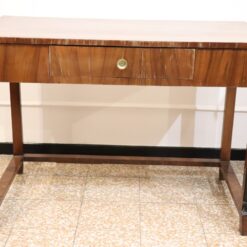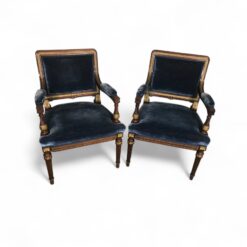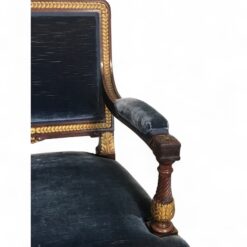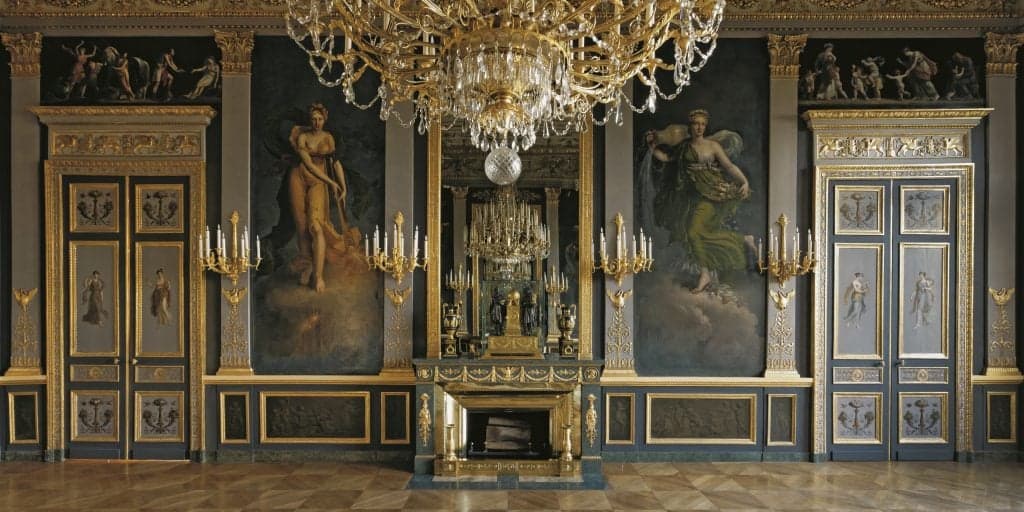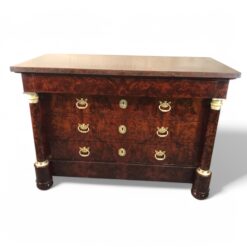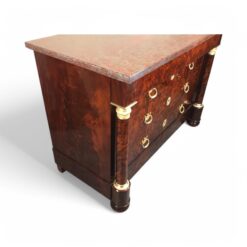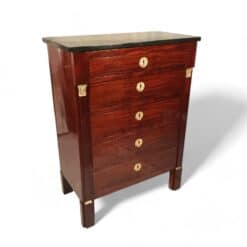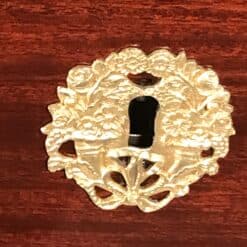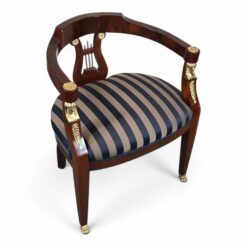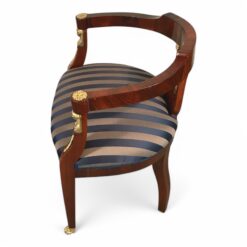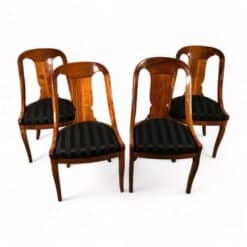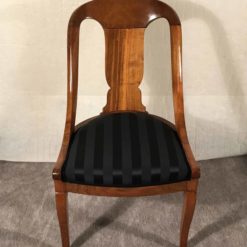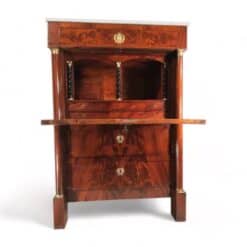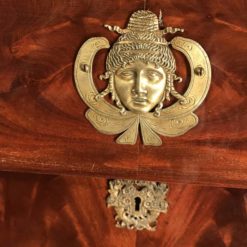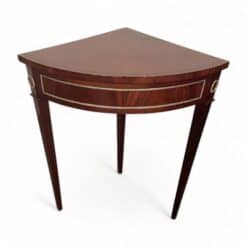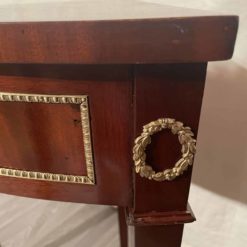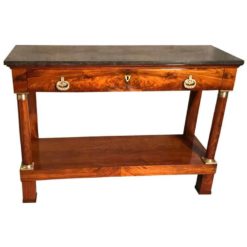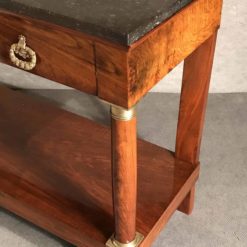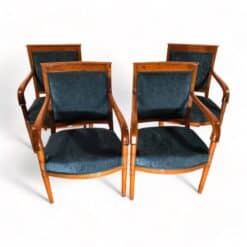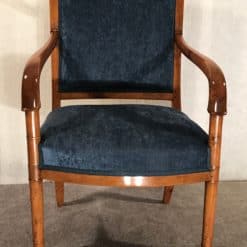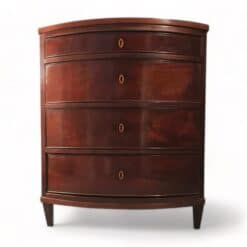Best Sellers
Styylish History
Empire Furniture Style & Design History
Empire Furniture History
Napoleon’s Rule and Influence
Empire furniture arose during the reign of Napoleon Bonaparte over the First French Empire, which lasted from 1804 to 1814.
A strong military leader and ruler, Napoleon was intensely aware of the value of the arts as tools for propaganda.
He promoted the developing Empire style as he believed it reflected France’s prominence and power.
An autocratic ruler, Napoleon led an absolute government and abolished basic rights such as democratic elections and freedom of speech.
Despite this, he made significant strides towards improving public education, religious freedoms, and more.
Napoleon’s total control deeply influenced French culture, affecting society, the economy, and the arts.
Characteristics of Empire Furniture
Empire design flourished under Napoleon’s rule. Like pre-Revolution guilds, the government imposed strict protocols and specifications regulating the style of artistic productions and manufacturing.
Under these regulations, cabinetmakers started designing pieces harkening back to Baroque designs.
Empire furniture suited Napoleon’s penchant for large components, as well as his urge to show off his authority.
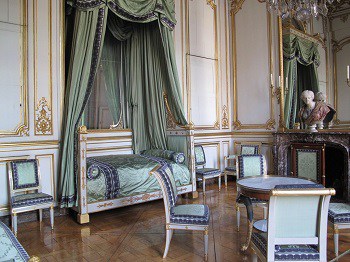
This style spread across the continent because of Napoleon’s many European military campaigns.
The Empire style is an evolution of Neoclassic design. These two styles share similar features, as can be seen in themes borrowed from Roman antiquity.
Empire furniture, like Louis XIV pieces, is known for its commanding size and grandeur, which are meant to be awe-inspiring.
Most furniture from the Empire period has large dimensions and abundant adornment. These serve the purpose of making the pieces look striking and magnificent.
Empire furniture has a definitive layout and showcased simplistic geometric shapes with level surfaces and distinct angles. Decorations were symmetrical, and motifs mirrored one other on each side.
Like Neoclassic style furniture, Greek and Roman antiquity strongly influenced Empire pieces.
Motifs in Empire Furniture
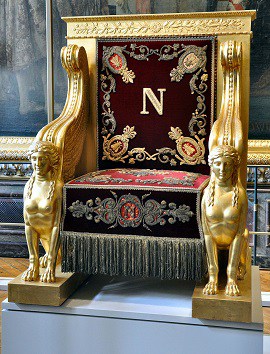
Napoleon admired the integrity and constraint of the Roman Empire. As a result, designs from this period reflect his idealization and emulation of these values.
War and the Classical World characterized the motifs of the Empire style. Military details included spires, coats of arms, and trophies.
Motifs from Roman mythology frequently appeared in furniture designs. Lions, eagles, deities, and other characters were common.
During Napoleon’s Egyptian campaign, sphinxes, palm leaves, and similar embellishments became common.
One of the more unique motifs that emerged was the bee, and the letter N encircled by a crown of laurels.
Found in several pieces of Napoleon’s furniture, the N symbolized triumph and glory.
Materials
During the earlier Directoire period, only the most exquisite pieces of furniture used mahogany.
Because of the Napoleonic wars and trade barriers against Britain, mahogany and other precious woods were rare.
Although limited, French colonies supplied a small amount of exotic woods. As a result, cabinetmakers used mahogany and similar materials sparingly.
The only things made from exotic woods were smaller items, veneers, or minute ebony features.
Instead, cabinetmakers used woods and other materials sourced locally, like walnut, maple, and beech.
Cabinetmakers still used bronze fittings, which were always symmetrically placed on flat surfaces.
Additionally, marble was used atop tables and desks and was usually gray or black. Sometimes, cabinetmakers used white marble tops.
Innovations in Empire Furniture
The Empire period saw the invention of several new furniture pieces. For example, psyche mirrors and the Minister desk were invented and became very popular.
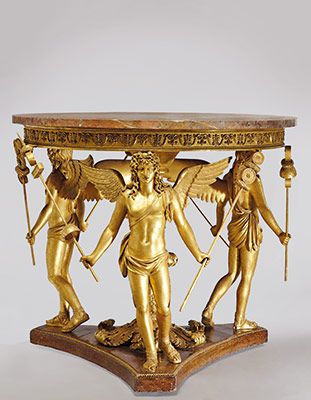
Tables
Empire style tables are more circular and bulkier versions of the gueridon table. During this time, they found use as dining tables.
Following typical Neoclassic patterns, console tables were rectangular, rigid, and dignified. Marble tops sat on dense friezes adorned with bronze fittings.
Empire Beds
In early 19th century France, Empire beds became standard. These beds sat low on the ground and were kept against a wall or cubicle, revealing one side.
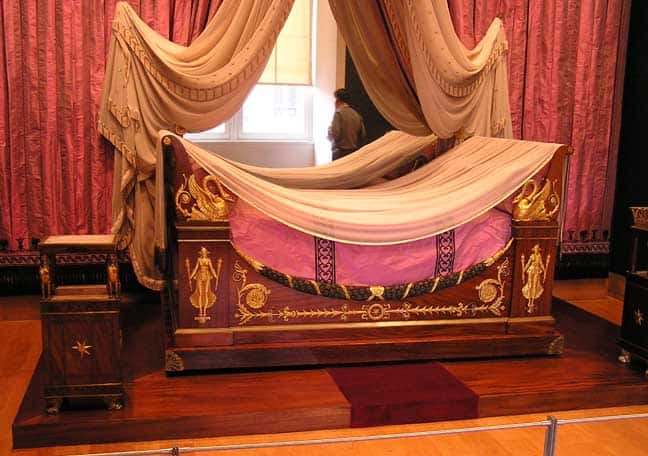
Sweeping bowed head- and footboards defined this new design. Additionally, Empire beds share many similarities with boat beds and gondola beds, as well as a prototype of American sleigh beds.
Seating
During the Empire period, single-purpose furniture shifted towards pieces with more general uses. Chairs were among the items that experienced the most significant changes.
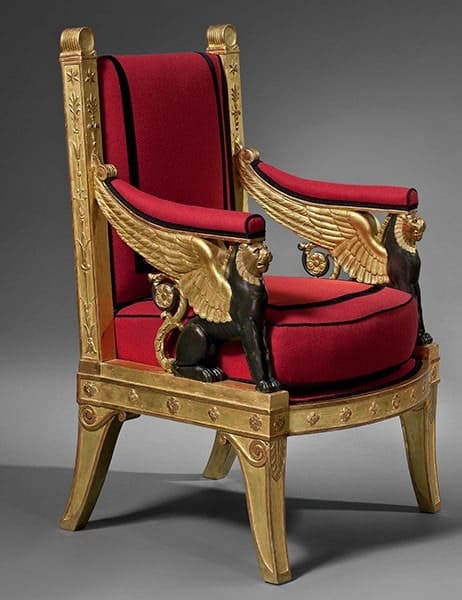
Chairs became substantial, had upholstered backs, and shared many similar features as Directoire style seats.
Cabinetmakers
Many architects, painters, and cabinetmakers profoundly shaped the Empire style. In particular, Percier, Fontaine, and Denon contributed significantly to this period.
Percier and Fontaine
Charles Percier and Pierre François Léonard Fontaine were hugely influential architects. Their work pioneered both Directoire and Empire furniture.
Together, they wrote Recueil de Décorations Intérieures (1812). This book became a fundamental guide to the style of this time.
Baron Dominique Vivant Denon (1747-1825)
Napoleon’s military campaigns in Egypt strongly influenced the integration of Egyptian elements in Empire furniture. However, Denon is predominantly responsible for its spread.
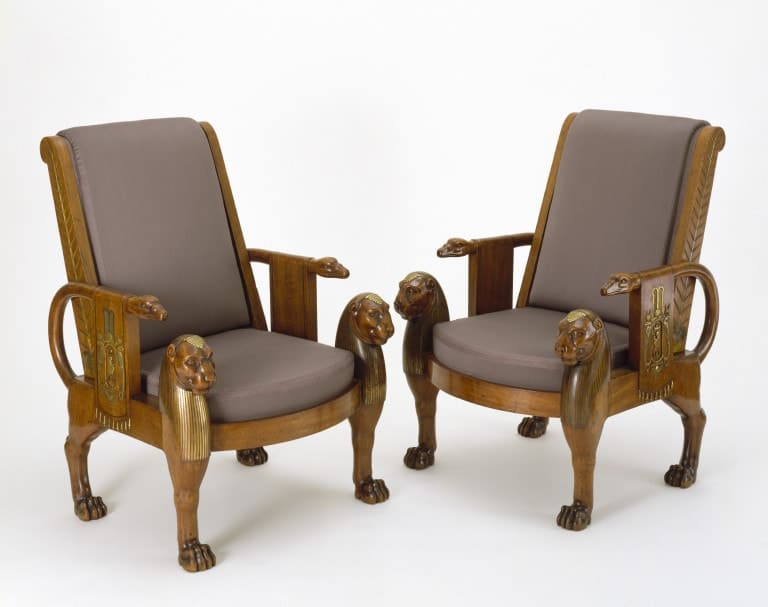
Denon wrote and published a book in 1802 during Napoleon’s Egpyt campaign. He depicted drawings detailing herms, palm leaves, mummies, and other exotic finds from temples, tombs, and more.
Later, Denon worked to connect Napoleon and Egyptian designs during his time as director of the Louvre.
Styylish
Check out the Blog for more antique history, style design tips, and more.
Then visit the Shop to view our large selection of beautiful and timeless antiques.
With Styylish, decorating your home with class and style is just a click away!

